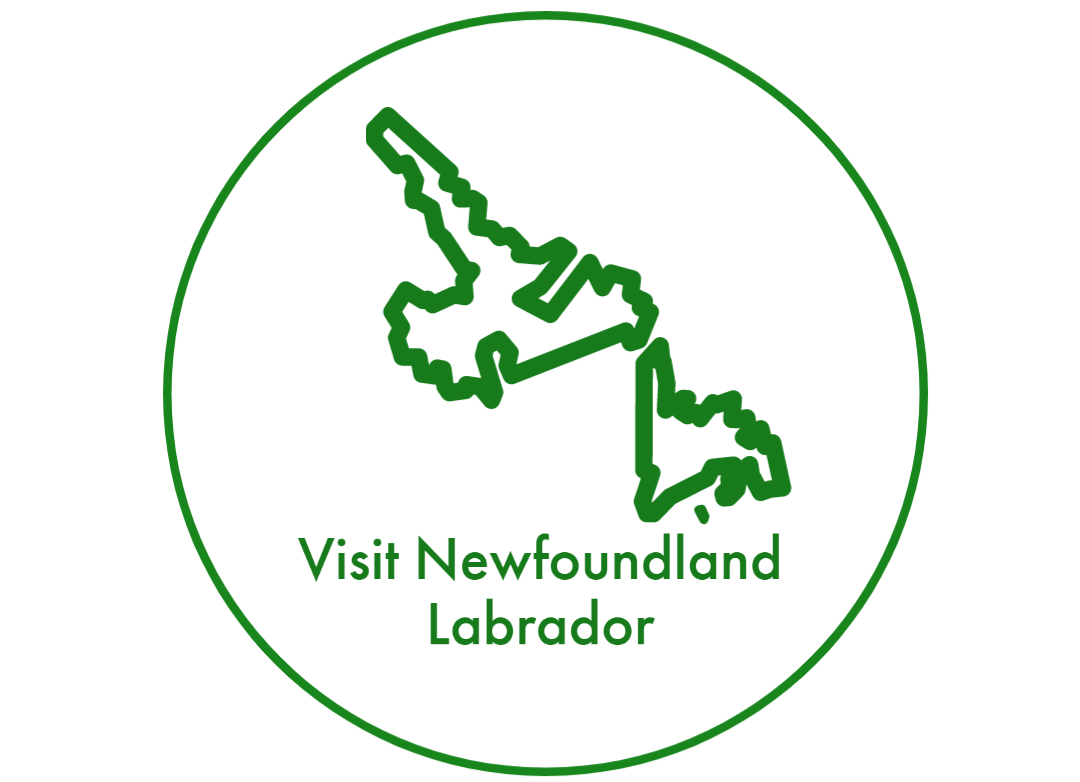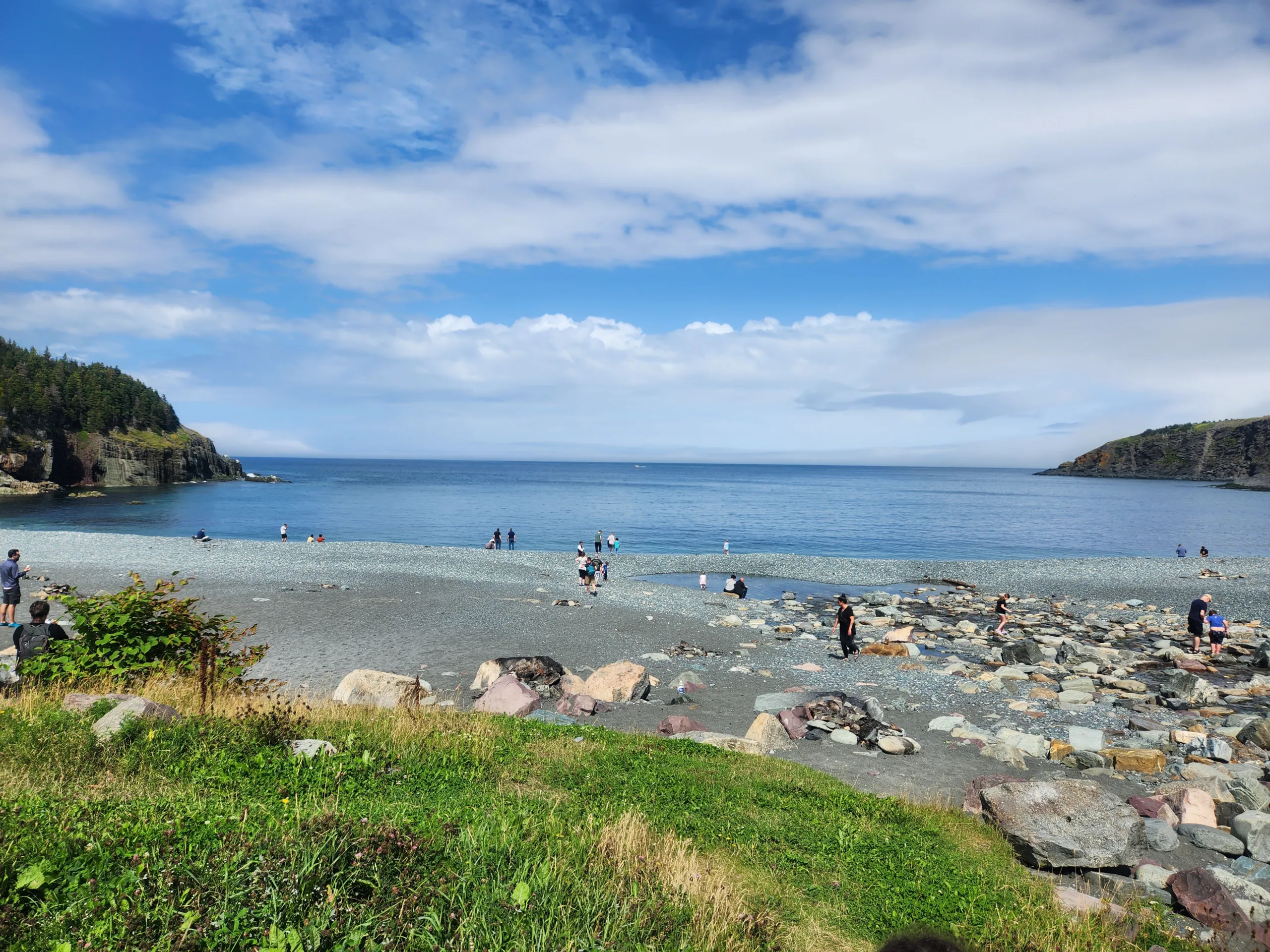A 12-day travel itinerary of the most popular places to visit
A 12-day travel itinerary of the most popular places to visit. Here’s a 12-day itinerary to hit all the must-see spots in St. John’s and soak in the unique culture of Newfoundland!
Days 1-4: St. John’s
Your first four days will be spent exploring St. John’s, a vibrant city steeped in history and charm. Here’s a breakdown:
Day 1: Get acquainted with the city by walking around the harbour and exploring the jellybeans row homes. Take in the colourful houses lining the streets, a signature sight in St. John’s. You must try two of the city’s best local places to eat.
- YellowBelly Brewery & Public House: As Newfoundland’s first brewpub, YellowBelly Brewery & Public House is a popular spot for craft beer enthusiasts and foodies. In addition to a selection of house-brewed beers, the menu features pub classics with a local twist, such as burgers, and battered fish and chips.
- Rocket Bakery & Fresh Food: For a casual dining experience focused on fresh, homemade fare, look no further than Rocket Bakery & Fresh Food. From hearty breakfasts to gourmet sandwiches and salads, Rocket Bakery offers something for everyone, all made with locally sourced ingredients whenever possible.
Day 2: No visit to St. John’s is complete without exploring Signal Hill National Historic Site. Hike to the top for panoramic views of the city and harbour, and learn about Signal Hill’s pivotal role in transatlantic communication. In the evening, catch a performance at the Ship Pub, a lively venue known for its traditional Newfoundland music.
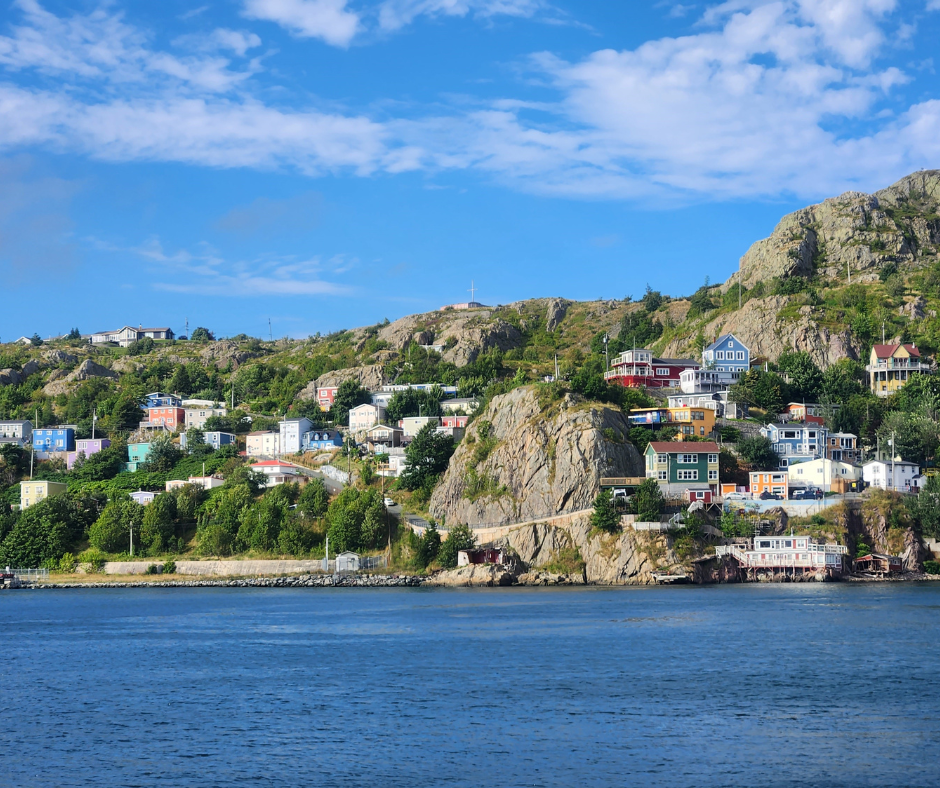
Day 3: Delve into Newfoundland fascinating history at The Rooms, a provincial museum that houses artifacts and exhibits showcasing the province’s culture, heritage, and natural environment.
Day 4 Take a walking tour of St. John’s to discover hidden gems and learn about the city’s rich past from a local guide. In the evening, indulge in retail therapy at Quidi Vidi Village, a charming historic fishing community with various shops and restaurants.
Day 5: Cape Spear
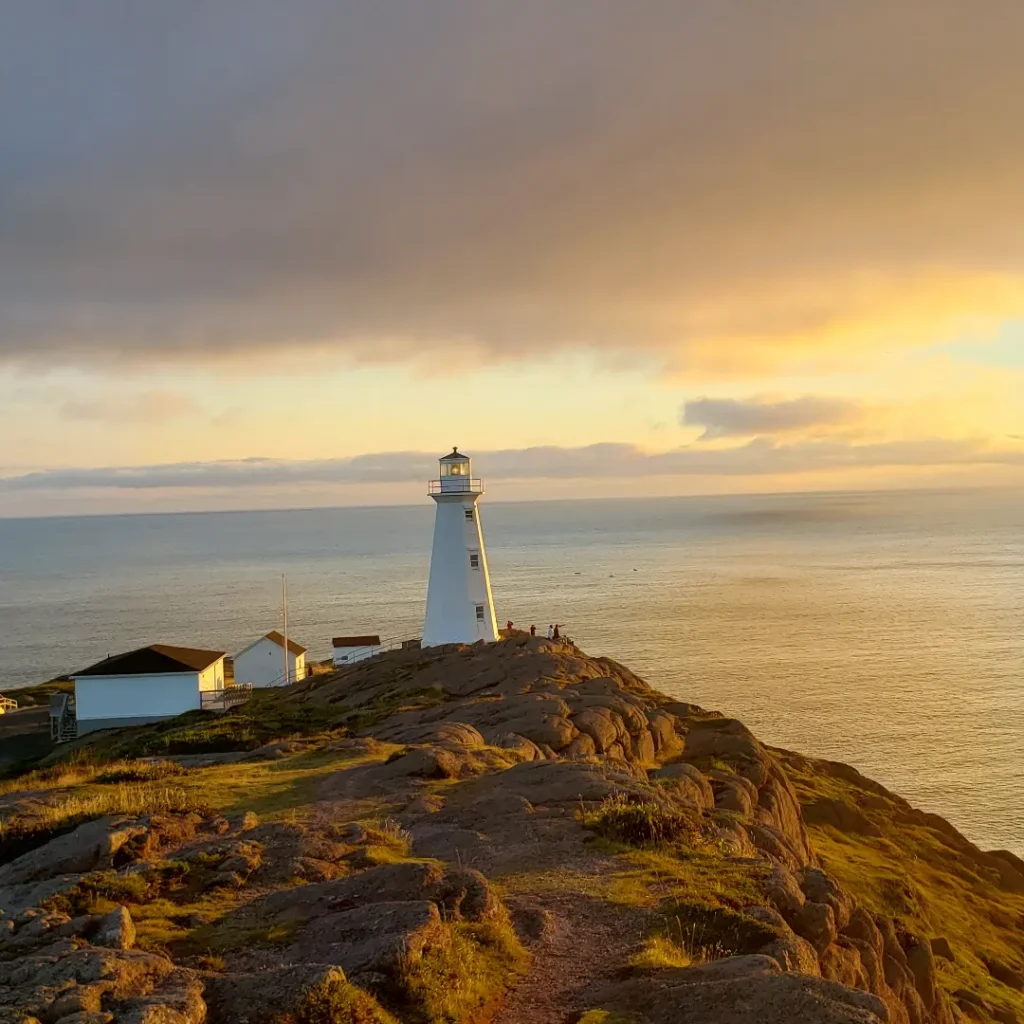
Head to Cape Spear, the easternmost point in North America, for a scenic day trip. Hike the trails along the cliffs, marvel at the lighthouse, and watch for whales and icebergs (if you’re visiting during the spring).
Days 6-11: Trinity & Bonavista
Venture out of St. John’s and explore the historic outports of Trinity and Bonavista on the scenic Bonavista Peninsula. Trinity boasts colourful houses and a charming harbour, while Bonavista is steeped in history and offers stunning coastal vistas. Hike the Skerwink Trail for breathtaking views, visit the Ryan Premises National Historic Site, and take advantage of the chance to see puffins at nearby Puffin Island (boat tours are available seasonally).
Bonavista Peninsula is known for its icebergs (in spring) and whale-watching opportunities. Take a boat tour to witness these majestic creatures in their natural habitat, explore the area, or kayak in the pristine waters. Enjoy fresh seafood at one of the local restaurants in the evening.
Day 12: Departure Day
On your last day, enjoy a leisurely breakfast, do some last-minute shopping for souvenirs, and reflect on your unique experiences in St. John’s. Depending on your departure time, you may have time to visit a local farmers’ market or explore more of the city before heading to the airport. Be sure to factor in some relaxation time – there’s no need to rush around! Most importantly, have fun and enjoy your time in Newfoundland!
Newfoundland Trip Planning. Travelers also ask.
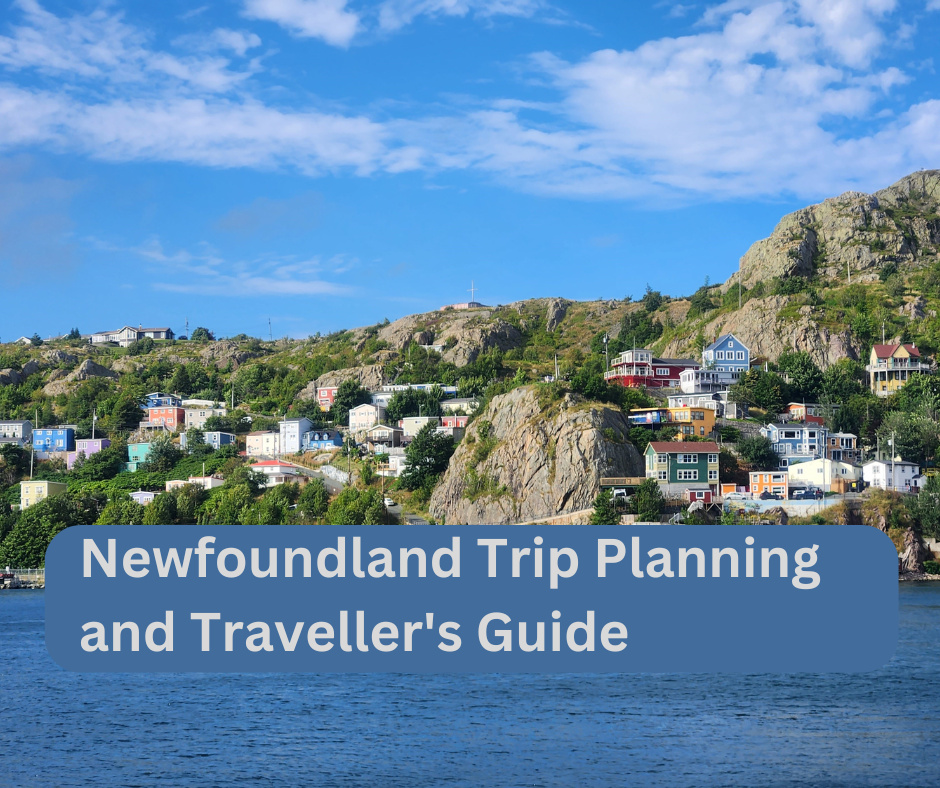
What is the best month to see whales in Newfoundland?
The best months to see whales in Newfoundland are June through August. During this period, whale species, including humpbacks, migrate to the region’s rich feeding grounds.
When can you see whales and icebergs in Newfoundland?
The optimal time to see whales and icebergs in Newfoundland is from late May to early July. Icebergs typically peak in May and June, while whale sightings become more frequent from June onwards.
What time of day are whales most active?
Whales are generally most active during the early morning and late afternoon. However, whale activity can vary, and sightings are possible throughout the day.
Where to see humpback whales in Newfoundland?
Humpback whales can be seen in several locations around Newfoundland, with top spots including Trinity Bay, Witless Bay Ecological Reserve, and St. John’s. These areas are known for their high concentrations of humpbacks during the summer months.
Is it better to go whale watching in the morning or at noon?
Morning is typically the best time for whale watching. The calmer seas and lower morning light conditions can make it easier to spot whales and ensure a more comfortable experience on the water.
What months are whales most active?
Whales are most active in Newfoundland from June to August. During these months, numerous species, including humpbacks, minke whales, and orcas, are commonly spotted in the region’s waters.
How many days do you need in Newfoundland?
To fully experience Newfoundland’s attractions, including whale watching, puffin viewing, and exploring the natural landscapes, a visit of at least 7 to 10 days is recommended. This allows ample time to see multiple regions and partake in various activities.
When can you see whales and puffins in Newfoundland?
You can see whales and puffins in Newfoundland from mid-May to early September. Puffins are particularly abundant during their nesting season from late May to August, coinciding with the peak whale-watching months.
What is the best time of year to go to Newfoundland?
The best time of year to visit Newfoundland is from June to September. This period offers the most favourable weather for outdoor activities, including whale watching, hiking, and bird watching.
What are the chances of seeing a whale while whale watching?
The chances of seeing a whale while on a whale-watching tour in Newfoundland are high, often exceeding 90% during peak season. Tour operators are skilled at locating whale activity, ensuring a high success rate.
What weather is best for whale watching?
Calm, clear weather is best for whale watching. Calm seas provide a smoother ride, making spotting whale activity on the water’s surface easier. Clear skies also enhance visibility for spotting whales from a distance.
Where do whales go at night?
Whales typically remain in their feeding or resting areas at night. They do not sleep like land mammals. Instead, they rest one hemisphere of their brain at a time. This allows whales to remain aware of their surroundings.
What months are whale watching?
Whale watching in Newfoundland is best from June to September, coinciding with the whales’ feeding migration to the region’s rich waters.
Does the time of day matter for whale watching?
Yes, the time of day can matter. Early mornings and late afternoons are often the best times for whale watching due to favourable lighting and sea conditions.
How often do whales wash up on beaches?
Whales washing up on beaches, known as strandings, are relatively rare occurrences. While occasional strandings happen, they are not expected and are often due to illness, navigational errors, or other factors.
Can you see whales in Gros Morne National Park?
While Gros Morne National Park is more famous for its stunning landscapes, whale watching is possible in nearby coastal areas. Boat tours from nearby towns, such as Rocky Harbour, offer opportunities to see whales.
Are there narwhals in Newfoundland?
Narwhals are typically found in Arctic waters and are not commonly seen in Newfoundland. The seas around Newfoundland are more frequented by humpback, minke, and orca whales.
What to wear on a whale-watching tour in Newfoundland?
Dress in layers to prepare for variable weather conditions. A waterproof jacket, warm clothing, a hat, gloves, and non-slip shoes are recommended. Even in summer, temperatures in the water can be extraordinary.
Should I eat before whale watching?
Eating a light meal before watching a whale is advisable, especially if you are prone to seasickness. Avoid heavy or greasy foods and consider taking seasickness medication if necessary.
Is whale watching worth it in the rain?
Whale watching can still be worth it in the rain, as whales are not deterred by wet weather. However, rough seas can make the experience less comfortable, so check the weather forecast and sea conditions.
What is the best time of day to go whale watching in Canada?
Early morning is generally the best time for whale watching in Canada, including Newfoundland. The calm seas and favourable light conditions make it easier to spot whales.
Do whales travel at night?
Yes, whales do travel at night. They continue their normal activities, including feeding and migrating, regardless of the time of day.
Do whales give birth every year?
Most large whale species, such as humpbacks, do not give birth yearly. They typically have a breeding cycle of one calf every two to three years.
What time of year are baby whales born?
Baby whales, or calves, are usually born in the winter months. Humpbacks, for instance, give birth in warmer waters, such as those in the Caribbean, and migrate to feeding grounds like Newfoundland in the summer with their calves.
When is the best time to see puffins in NL Newfoundland?
The best time to see puffins in Newfoundland is from late May to early September. During this period, puffins come to breed on coastal cliffs and islands, with peak activity in June and July.
Where can I see puffin in Newfoundland?
The Witless Bay Ecological Reserve, Elliston, and the Cape Bonavista Peninsula are the top locations to see puffins in Newfoundland. These areas are known for large puffin colonies during the breeding season.
Is there whale watching in Newfoundland in May?
Yes, whale-watching tours typically start in Newfoundland in May. While sightings may be less frequent early in the month, whales are commonly seen by late May as they migrate into the area.
Should I bring binoculars for whale watching?
Bringing binoculars is a good idea for whale watching, as they can enhance your ability to spot whales and other marine life at a distance. They also allow for better viewing of birds and coastal scenery.
What do you do if you see a whale in the water?
If you see a whale in the water, remain calm and enjoy the experience from a safe distance. Avoid sudden movements and any loud noises that could startle the whale.
How safe is whale watching?
Whale watching is generally very safe, mainly by reputable tour operators who follow safety guidelines and regulations. Always listen to the crew’s instructions and wear a life jacket if provided.
What is Special About Cape Spear?
Cape Spear, located near St. John’s, Newfoundland, is renowned for its historical and geographical significance. It boasts the oldest surviving lighthouse in Newfoundland and Labrador and is designated a National Historic Site. Visitors can explore the restored lighthouse and learn about the region’s Atlantic history. Additionally, Cape Spear offers stunning coastal views, dramatic cliffs, and whale and bird-watching opportunities.
Is Cape Spear the Most Easterly Point in North America?
Yes, Cape Spear is indeed the most easterly point in North America. This geographical distinction makes it a popular spot for tourists who want to experience the continent’s eastern edge.
How Long to Spend at Cape Spear?
You should typically spend about 1 to 2 hours at Cape Spear. This time allows for exploring the historic lighthouse, walking along the scenic trails, and taking in the breathtaking views of the Atlantic Ocean.
What is the Farthest East Point in Newfoundland?
Cape Spear is the farthest east point in Newfoundland. Its geographical position marks it as the easternmost point of both the island of Newfoundland and North America.
What is the Farthest Point East in Canada?
Cape Spear holds the title for the farthest point east in Canada.
Are There Two Lighthouses at Cape Spear?
Yes, there are two lighthouses at Cape Spear. The original lighthouse has been restored to its 19th-century appearance. A newer lighthouse was constructed, is still operational, and provides vital navigation aid.
Can You Drive to Cape Spear?
Yes, you can drive to Cape Spear. It is accessible via Blackhead Road from St. John’s and has a visitor parking area.
Can You See Europe from Newfoundland?
No, you cannot see Europe from Newfoundland. The distance across the Atlantic Ocean is too vast for Europe to be visible from Newfoundland.
Is Cape Spear Worth It?
Cape Spear is worth visiting. Its historical significance, stunning coastal scenery, and the experience of standing at North America’s easternmost point make it a memorable destination.
What is Bonavista known for?
Bonavista is known for its rich historical significance, stunning coastal scenery, and vibrant cultural heritage. It is one of Newfoundland most historically significant towns, famous for being the landing place of the explorer John Cabot.
Visitors often see the Cape Bonavista Lighthouse, explore the Ryan Premises National Historic Site, and enjoy whale watching and puffin spotting. The town also boasts charming historic buildings and a welcoming community, making it a popular destination for those looking to experience Newfoundland history and natural beauty.
Is it better to stay in Bonavista or Trinity?
Both Bonavista and Trinity offer unique experiences, and the choice depends on what you are looking for. Bonavista is more significant with more amenities and historical sites, such as the Cape Bonavista Lighthouse, Dungeon Provincial Park, Matthew Legacy, Mockbeggar Plantation, Bonavista Museum and the Ryan Premises.
It offers more opportunities for activities like hiking, whale watching, and visiting local museums. On the other hand, Trinity is more petite and known for its well-preserved historic buildings, quaint charm, and cultural experiences, including theatre productions by Rising Tide Theatre. Bonavista might be better if you prefer a bustling environment with more historical landmarks. Trinity could be more suitable for seeking a quiet, picturesque setting with cultural enrichment.
How far is Bonavista Bay from St. John’s?
Bonavista Bay is approximately 300 to 350 kilometres from St. John’s by road. Depending on weather and road conditions, the drive typically takes around 3 to 4 hours.
What is Trinity, Newfoundland, is known for?
Trinity is known for its historical significance, scenic beauty, and cultural offerings. The town is famous for its well-preserved buildings and role in Newfoundland fishing history. Trinity is also renowned for the Rising Tide Theatre, which offers performances that depict the region’s history and culture. The town’s picturesque harbour, historic sites, and walking trails also attract visitors looking for natural beauty and historical charm.
What is Trinity Bay known for?
Trinity Bay is known for its stunning coastal scenery, rich marine life, and historic towns. The bay is a popular for boating, whale watching, and birding, particularly puffin spotting. The area also has significant historical sites related to Newfoundland fishing industry and early European settlement.
What is the history of Bonavista?
Bonavista’s history dates back to when John Cabot is believed to have landed there. It became an important fishing community, serving as a hub for the cod fishery. Throughout its history, Bonavista has been a significant site for European settlement, Atlantic trade, and cultural development in Newfoundland and Labrador. The town’s historical sites, such as the Ryan Premises and Cape Bonavista Lighthouse, reflect its rich past.
What coast is Bonavista on?
Bonavista is located on the eastern coast of Newfoundland, facing the Atlantic Ocean.
Is Trinity a nice place to live?
Trinity is considered a charming and peaceful place to live, especially for those who appreciate small-town life, historic surroundings, and natural beauty. The town has a close-knit community, scenic landscapes, and cultural activities, making it attractive for residents who enjoy a quiet, culturally rich environment.
How far is Trinity Bay from St. John’s driving?
The drive from St. John’s to Trinity Bay covers approximately 260 kilometres and typically takes about 3 hours, depending on the specific destination within the bay and road conditions.
What are the demographics of the Bonavista Peninsula?
The Bonavista Peninsula’s population is predominantly of European descent, primarily English and Irish. The communities on the peninsula are generally small, with an economy traditionally based on fishing, though tourism has become increasingly important. The population is aging, as is common in many rural areas of Newfoundland and Labrador, with a significant number of residents being seniors.
How long does it take to hike the Skerwink Trail?
Hiking the Skerwink Trail typically takes about 1.5 to 2 hours. The trail is approximately 5.3 kilometres long and offers stunning coastal views and diverse terrain.
How many days does it take to drive around Newfoundland?
Driving around Newfoundland, including major scenic routes and stops at key attractions, generally takes about 10 to 14 days. This allows for a comprehensive tour, including exploring the various towns, parks, and historical sites.
How challenging is the Skerwink Trail?
The Skerwink Trail is considered moderately complex. It includes some steep sections and rugged terrain but is well-marked and maintained, making it accessible to most hikers with a reasonable fitness level.
Where is Trinity Bay, Newfoundland?
Trinity Bay is located on the northeastern coast of Newfoundland, part of the Atlantic Ocean. It is between the Bonavista Peninsula to the north and the Avalon Peninsula to the south.
How long is the Skerwink Trail in Newfoundland?
The Skerwink Trail is approximately 5.3 kilometres long, offering hikers spectacular coastline views and opportunities to see local wildlife.
What is the history of Trinity, Newfoundland?
Trinity’s history dates back a century when Portuguese explorers visited it. By the 18th century, it had become an important fishing and trading center.
When is the best time to whale watch in Newfoundland?
The best time to see whales in Newfoundland is from mid-June to mid-August. During this period, several species of whales, including humpbacks, can be seen migrating through the waters around Newfoundland.
Where to see whales in Newfoundland?
Whales everywhere around Newfoundland, including St. John’s, Bonavista, Trinity, and Twillingate. Boat tours from these locations offer some of the best whale-watching opportunities.
What is Cape Spear known for?
Cape Spear is known for being the easternmost point in North America. It is also famous for its historic restore lighthousese, which are the oldest surviving lighthouse in Newfoundland.
What is the population of puffins in Newfoundland?
Newfoundland is home to over 500,000 Atlantic puffins, with the largest colony on the Witless Bay Ecological Reserve.
When can you see whales in St. John’s?
Whales can be seen in St. John’s from mid-June to mid-August, with peak sightings often occurring in July.
Are the puffins still in Elliston?
Yes, puffins can still be seen in Elliston, particularly during their breeding season from late May to early September. The Elliston Puffin Viewing Site is a popular spot for observing these birds up close.
What is the history of Elliston, Newfoundland?
Elliston has a history rooted in the fishing industry. Established in the early 19th century, it became known for its root cellars, which were used to store vegetables. The town is now famous for its puffin colony and well-preserved root cellars.
Where can I see puffins in Newfoundland?
Puffins in Newfoundland can be seen in several places, including the Witless Bay Ecological Reserve, Elliston, and Cape Bonavista. Boat tours and designated viewing sites provide excellent opportunities to observe these birds.
What is a root cellar in Newfoundland?
A root cellar is an underground space to preserve vegetables and other perishable food items. These structures use the earth’s natural insulation to maintain a calm, stable temperature year-round, which helps keep the food fresh.
What month is best to see puffins?
The best months to see puffins in Newfoundland are from late May to early September, with peak viewing opportunities in June and July.
What time is it best to see puffins?
The best time to see puffins is during the early morning or late afternoon when they are most active.
Where can I see puffins in Elliston?
In Elliston, the best place to see puffins is the Elliston Puffin Viewing Site. This site provides excellent vantage points for observing puffins in their natural habitat, particularly during the breeding season.
These are the best travel planning resources you should use.
Looking to book your trip to Newfoundland and Labrador? Use these resources that are tried and tested by other travellers like you who vacation in Newfoundland and Labrador. Bookmark these links. Save them for future reference.
Booking Flights, Hotels or B&B: Start planning your next vacation trip by finding the best flight, hotel or b&b deals. Book Here
Finding things to do in Newfoundland and Labrador on TripAdvisor and Viator is not hard. Enjoy boat tours, whale watching, icebergs watching, kayaking and other activities.
You can also find low prices on hotels, B&B and cabins with these two providers. If you are located in Canada, the USA, the UK or Europe, use Booking.com, and if you are in Canada, the USA or anywhere else, use TripAdvisor.
Car Rental: Here is what we recommend:
When you book with Rentalcars.com, you can compare prices and find the best vehicle for your trip. Economybookings.com Display all their vehicle on the website with a detailed description. They display high-quality photos and a user rating as well. Qeeq.com serves road trip travellers like you from different countries by working with car rental companies worldwide.
Get compensated if your flight is delayed or cancel
AirHelp and Compensateair will help you with flight delays, cancellations, or denied boarding. All you need to do is to submit your flight details, and they will handle the claim process on your behalf. They will handle all the paperwork, airline negotiations, and legal proceedings.
Do you need more help planning your trip?
Check out our Resources Page, where we highlight all the resources and companies you can use to assist with your planning.
Where can I find more information about travelling to Newfoundland and Labrador? Here are helpful resources for planning your trip:
Newfoundland and Labrador Tourism | Travel Canada | The Rooms Provincial Museum
